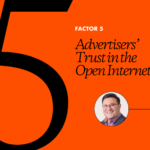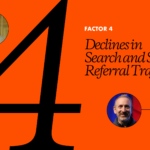In the digital media world, the Age of Acquisitions has arrived.
Vox acquired New York Magazine and its suite of sites—and then, two years later, acquired Group Nine (home of the Dodo and NowThis, among other publications). Gawker’s suite of sites (minus Gawker) was sold to Univision, merged with the Onion/AV Club, and then sold again to Great Hill Partners. The New York Times purchased The Athletic; Buzzfeed purchased HuffPost and Complex; Vice is reportedly in the process of selling itself, potentially in pieces.
For struggling independent publishers, acquisition can serve as a much-needed lifeline. And for those publishers who are doing well, acquisition is still top of mind; in a hyper-competitive and rapidly consolidating media environment, the cons of staying independent can outweigh the benefits.
To that end, publishers are understandably looking for ways to make themselves more attractive to potential buyers. And while there are countless indicators buyers use to evaluate potential purchases, few are more important than the presence of a growing, passionate audience of loyal users.
Building The Right Kind Of Audience
There was a period of internet history—only six or seven years ago now, though it feels like an eternity—when the model everyone was emulating was simple: high-volume, low-effort, ultra-clickable content designed to attract the largest audience possible. This was the era of Upworthy and ViralNova, when Gawker’s “viral traffic whisperer” could be profiled in the Wall Street Journal. The future of digital media, it seemed, would be easily-digestible content designed to spread rapidly on Facebook.
That future never panned out: for all its talk of fostering a vibrant ecosystem of publishers, Facebook’s whimsical algorithm changes prevented these sites from gaining a lasting foothold—and proved that, if publishers wanted to build a sustainable future, they would need to build it on their own terms.
In the current acquisition environment, that means an owned audience. Drive-by traffic from social media is (and always will be) important, but what potential acquirers really want to see—and what publishers should really be aiming for, regardless of whether they’re looking to be acquired—are readers who arrive directly.
It’s the difference between selling your product at a large retailer, where it’s surrounded by its category competitors, and selling through your own store, without any intermediary taking a cut. The latter builds brand loyalty far more effectively, and it insulates publishers from abrupt shifts that take place at the big social platforms.
How Community Helps Publishers Stand Out
The question publishers should be asking, then, is: how to get there? How can one build an audience that cares about content enough to visit day after day—and potentially subscribe down the line?
The answer, as ever, is community.
We’ve already mentioned the big social platforms. More than anything else, what’s facilitated their massive success—their stickiness—has been their ability to connect like-minded people and to facilitate conversations.
By grabbing that aspect of the social experience for themselves, publishers can ensure the kind of committed audiences that get acquirers interested.
That, of course, means comments. Historically, comment sections have gotten a bad rap—thought to be the domain of basement-dwelling trolls intent on sabotaging any semblance of respectful conversation. People like this do of course exist, but a glance at any well-moderated comments section can dispel the idea that this is the dominant paradigm.
In fact, there are publisher-owned comments sections that are thriving. These conversations, spurred by publisher content, are closer to friendly group chats than to the invective-heavy free-for-all we typically associate with online forums. People make jokes, quibble with or extend points made by the post’s author, engage in involved (yet respectful) disagreements spread across dozens of moments.
That is what an engaged audience looks like. These are people who will come back to read and interact, day after day. The content, of course, remains the main draw, but a great conversation is what keeps them around—boosting page views, retention, registrations, and subscriptions along the way.
By creating an environment where user-generated content can flourish, publishers can rapidly expand the quantity of available content for readers to sift through. Your site develops a kind of sprawling shadow masthead of active and engaged readers, whose commentary readers look forward to digging into.
It is these committed, active users that acquirers are interested in, just as much as your content itself. Expanding the share of engaged users supports publisher goals down the line—whether or not they have any intention of selling.


